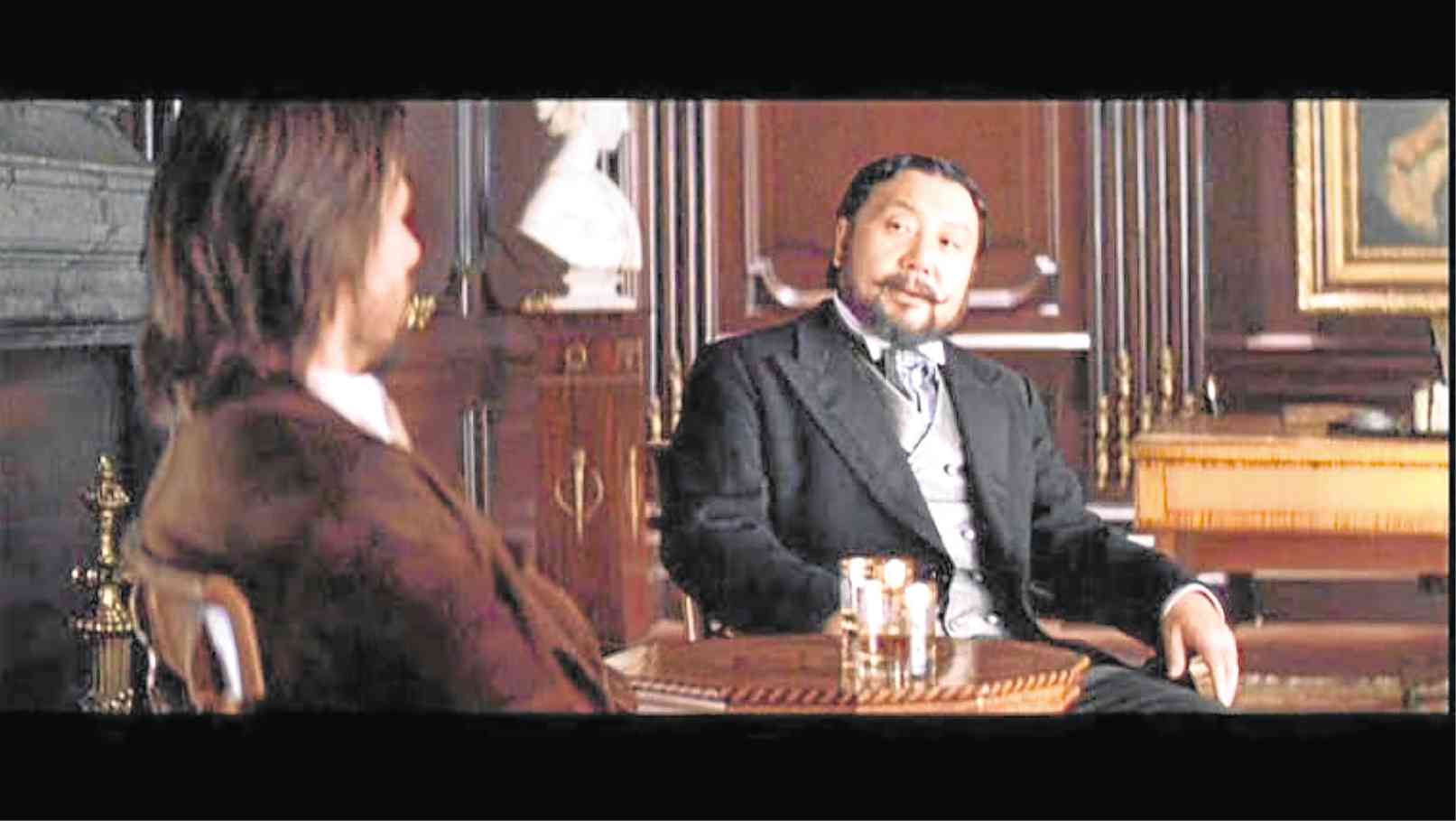“I played the bad guy, Omura,” Harada told the Inquirer.
Zwick initially consulted Harada on casting Japanese actors for pivotal roles. Little did he know that he would end up acting in front of the camera, as well.
“I had two screen tests,” he recalled. “The first time was terrible because my voice was hoarse. For the second tryout, I prepared… by going to a karaoke bar and singing Elvis Presley and Nat King Cole songs.”
He described his debut as an actor as “frustrating and enjoyable at the same time.”
He recounted his first encounter with Mr. Mission Impossible. “We had a script reading and there was this guy in a baseball cap serving coffee for everyone. It turned out to be Tom! I didn’t recognize him because he grew a full beard for the role. He hired Starbucks for the session, but personally distributed the coffee!”
Harada related that Cruise was quite a prankster. “Our scene at the emperor’s court was filmed during Halloween. Even though he didn’t have to, he joined me for my closeup shots. But since it was Halloween, he wore a clown’s mask. His goal was to make me laugh during the take.”
Harada was in Manila recently to attend the Eiga Sai Japanese film festival, ongoing at the Shangri-La Plaza mall until July 17. He also graced the launch of the 12th Cinemalaya last week.
It was his second time in the country. His first visit coincided with the filming of “Apocalypse Now” in Pagsanjan, Laguna in 1976 to interview its director Francis Ford Coppola.
Prior to becoming a director, Harada was a leading film critic and entertainment journalist. His encyclopedic knowledge of world cinema can be attributed to his stint as a reporter and his innate love for moving pictures.
“I told Francis that my mother brought me to watch Akira Kurosawa’s ‘Seven Samurai’ when I was 5 years old.” Needless to say, the Oscar winner was amazed.
During his tour of duty as a film writer, he interviewed such legends as Alfred Hitchcock (“boring but a genius”), Howard Hawks (“my mentor”), Billy Wilder (“a funny guy”), among others.
Harada grew up on a steady diet of Hollywood flicks—including those that tackled the Pacific War. “But I was rooting for the Allied forces, not the Japanese army. My idols were Montgomery Clift, Richard Widmark and John Wayne.”
Still, when it was his turn to make a World War II film, he endeavored to make a difference. The result was “The Emperor in August,” which was based on a non-fiction book by Hando Kazutoshi. He related that the same story was tackled in the 1968 film, Kihachi Okamoto’s “Japan’s Longest Day”—which revisited his country’s surrender in 1945.
Harada explained that he “wanted to do it right this time and did a lot of research.”
He wanted to paint a more realistic portrait that depicted the main protagonists, including the emperor and his top generals, not as caricatures, but as “ambivalent” and conflicted human beings.
He casually mentioned that whenever he attends film festivals, he embarks on impromptu location hunting expeditions, as well.
This trip renewed his interest in a past project he had been developing—the Battle of Manila Bay. With the fast pace of development in Manila in the past four decades, he wondered if he could still find the architecture and landmarks needed for such a period film.
He is currently working on another historical epic on the Battle of Sekigahara, the biggest in Japan’s history which saw 150,000 combatants and left 10,000 fatalities in 1600.
During his short visit last week, he gave three lectures and attended screenings of his films, “Kakekomi” and “The Emperor in August.” A third Harada film, “Chronicle of My Mother,” which won the Special Grand Prix of the Jury at the Montreal World Film Festival in 2011, was also in the fest’s lineup.
Without a doubt, the lectures came naturally to him because he had also worked as a professor for five years at the Nihon University in Mishima—sharing his passion for film with “young people whose notion of the movies was limited to the Harry Potter franchise.”
In the university, he conducted lectures on Kurosawa (“There were only 10 students!”) and Hitchcock (“The class had 120 students!) and marveled at the writing talent of his students.
“The campus is near my place, Numazu. I consider teaching my way of giving back to the people of my hometown,” he remarked.
